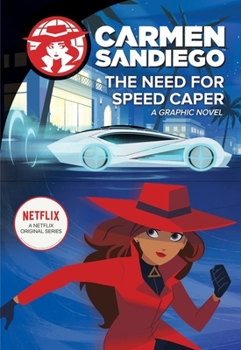The Need for Speed Caper
(Book #4 in the Carmen Sandiego Graphic Novels Series)
Select Format
Select Condition 
Book Overview
Adventure awaits in this full-color graphic novel, based on the Netflix series starring Gina Rodriguez. Take in all the action and excitement of Dubai and get a taste of geography, culture, and history with Carmen Sandiego--the world's greatest thief
Format:Hardcover
Language:English
ISBN:0971454817
ISBN13:9780971454811
Release Date:January 2002
Publisher:Quantuck Lane Press
Length:63 Pages
Weight:0.86 lbs.
Dimensions:0.6" x 7.9" x 8.4"
Customer Reviews
5 customer ratings | 5 reviews
There are currently no reviews. Be the first to review this work.




















